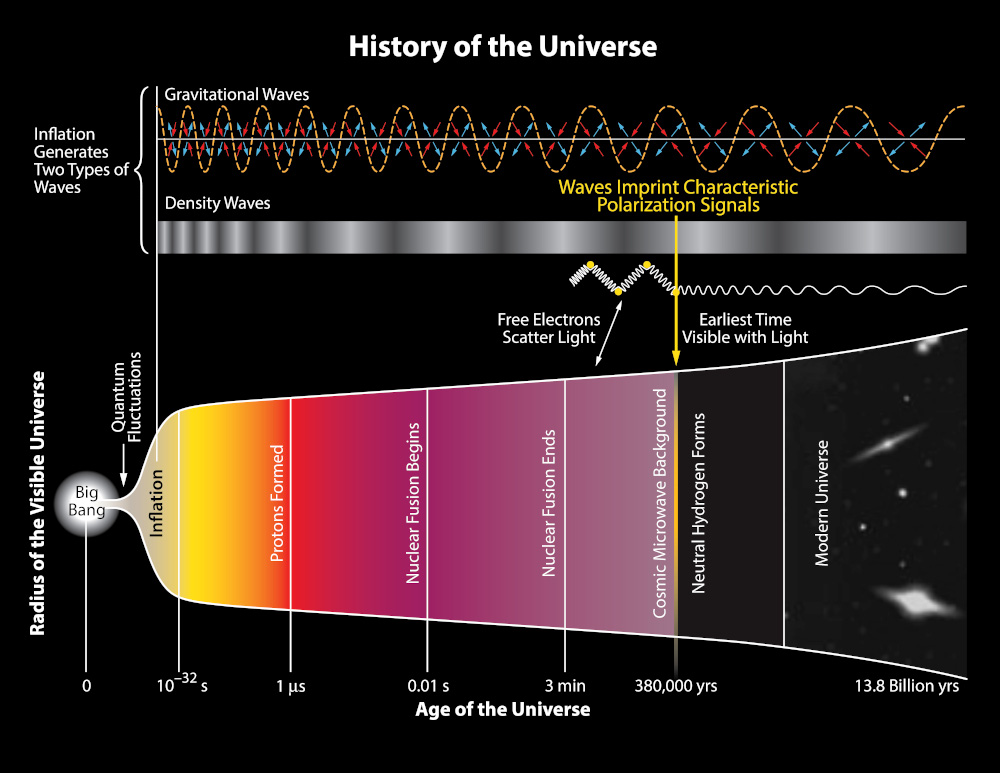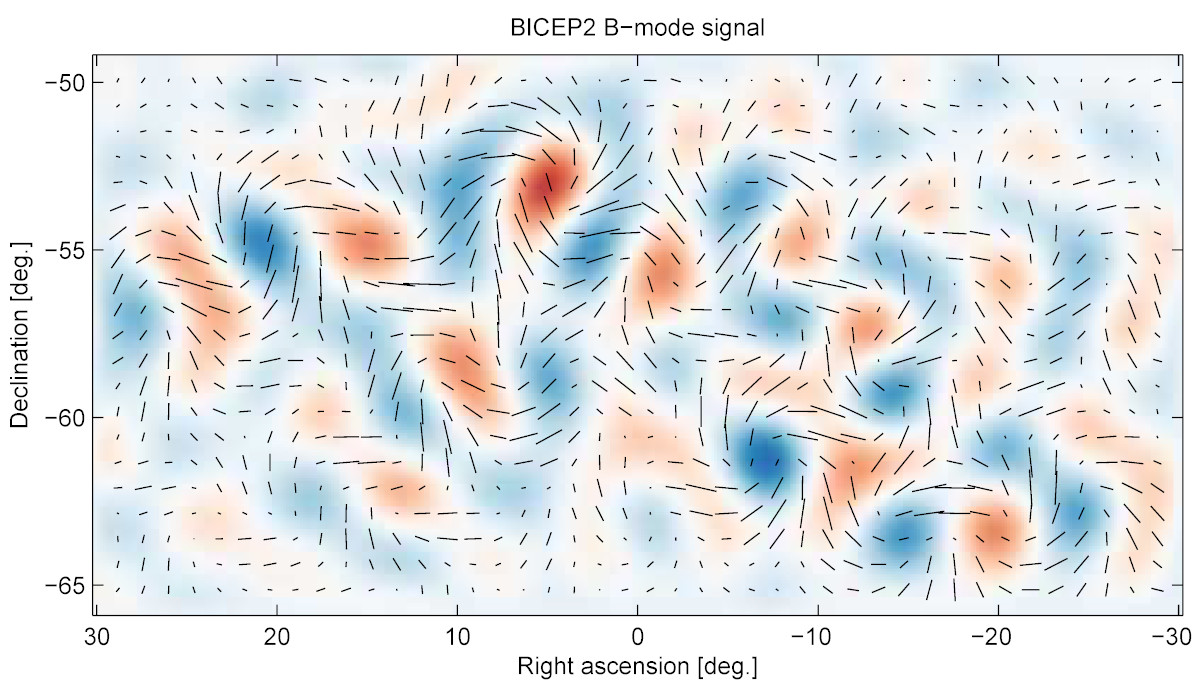The BICEP Array telescope is a microwave frequency telescope, peering back in time at the oldest light in the universe. The farther away an object is, the more its light is red-shifted, or stretched to a longer wavelength (lower frequency) of light. The mind-bending simple explanation for this fact is that space itself is actually expanding, stretching the light traveling through it.
After the big bang, the universe was extremely dense and hot, and only elementary particles existed. The universe slowed its expansion, cooled, and the particles coalesced into protons. Light at this time wasn't able to travel far before being scattered by the plasma. The universe was a dense, opaque fog. But the universe expanded and cooled enough so that the electrons and protons could combine into Helium. The Helium gas, and thus also, finally, the universe, was transparent, allowing light to spread through the universe unimpeded. This is known as the time of last scattering, some 380,000 years after the big bang. That ancient light is still traveling through our universe today, 13.8 billion years later, and is known as the cosmic microwave background (CMB).
This is the oldest light from the most distant source in the universe, and has been stretched to millimeter-scale wavelengths. Being the oldest light, it gives us a glimpse of the universe in it's very early stages. The CMB is almost uniform in all directions, except for very subtle variations. The uniformity of the light can be accounted for by a period of very rapid expansion of the universe right after the big bang, called inflation. This stretched out space and everything in it so fast and so much that now we see a smooth, almost featureless CMB. The very subtle variations in intensity of the CMB indicates to us the non-uniform distribution of matter in the early universe. It is from these non-uniformities that large-scale structure of the universe formed (think galaxies and clusters of galaxies!).

Inflation and the big bang sounds crazy, but it is the most straightforward explanation for what scientists have observed. The problem is, we can't see light older than the CMB, because back then the universe was opaque. So how can we find out if the big bang and inflation are real if we can't see it?
During inflation, the rapid expansion of the universe outpaced the speed of light, sending ripples through the fabric of spacetime. These ripples are known as gravitational waves. The existence of gravitational waves were predicted by the famous theory of general relativity over 100 years ago, and the first gravitational waves ever detected were finally measured by the LIGO experiment on September 14, 2015, from two merging black holes. What a time to be alive!
Check out this video about a confirmed detection of gravitational waves, from one of my favorite science youtube channels.
As the light of the CMB was generated in the presence of the gravitational waves still echoing through the universe since their genesis during inflation, it was polarized with a combination of patterns known as 'E-Mode' and 'B-Mode' polarization. E-modes can be produced by light created in the presence of gravitational waves, as well as by the uneven distribution of matter and energy (in an effect called Thomson scattering). B-modes were only produced by the gravitational waves at the time of last scattering. The relative strength of the measured B-modes to E-modes can tell us about the behavior of the early evolution of the universe, and providing another data point constraining the standard cosmological model scientists use to describe it.

Another problem is that, in the modern universe, the CMB is not the only source of 'B-Mode' polarization. It can also be produced by the scattering of light by dust in our own galaxy, or synchrotron radiation from charged particles drifting through the magnetic field lines that twist and turn through our own galaxy. The spectra of the interstellar dust, synchrotron, and CMB are known to be different, so by observing the same area of sky at different frequencies it is possible to differentiate between the two sources of polarized light. There is still uncertainty in the relative contributions of each source in our measurements, and being able to carefully extract the signal from only the CMB is a primary goal of the BICEP Array telescope. The telescope will have higher sensitivity at more frequencies than the CMB polarization telescopes that come before it. The data we collect will help refine our understanding of the evolution of the early universe!